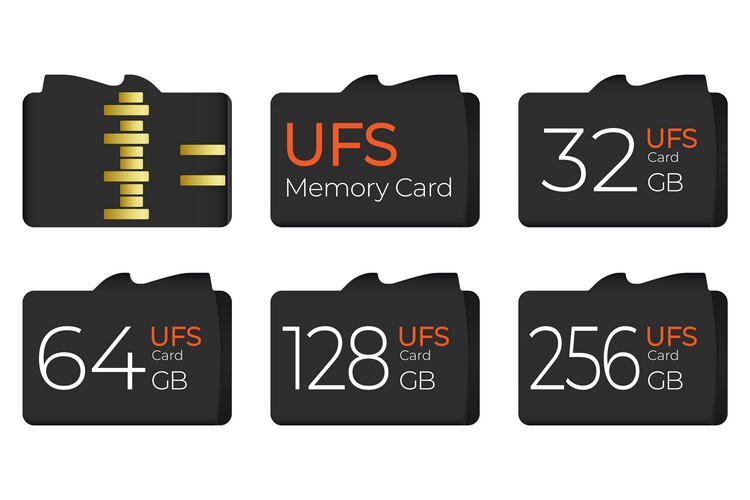We are going to explain what the UFS standard is, a technology that is present in today’s smartphones. It is the storage memory standard used by smartphones, and over time it has been advancing with different versions of which we are also going to tell you about so that you know its main features.
The UFS standard has been replacing other standards such as eMMC in smartphone storage memories, so it is worth knowing about it. We will start by briefly explaining what it is and what it is used for, and then we will talk about its different versions.
What is UFS?
UFS stands for Universal Flash Storage, is the storage memory standard used by smartphones, and you can also see it in other consumer electronic devices such as digital cameras or tablets.
To make it clear, the UFS would be the equivalent of the SSD memories of computers but adapted in shape and size to work in smartphones. The first generation of modules with this standard already offered three times the speed and other improvements over eMMC modules, another SSD competitor designed for mobile phones.
The UFS standard is a type of NAND Flash memory, just like SSDs, and implements a so-called full-duplex interface. Just so you don’t get lost with the names, that means it can read and write data simultaneously, something that substantially increases its transmission speeds, and greatly improves multitasking.
Multitasking is doing several things at once. Even on computers, when you multitask or move different files or folders around at the same time, you will notice that the speed at which data is written is slower than if you only move one file. Hence the importance of this multitasking and speeding up simultaneous writes and reads of files.
As you will see a little further on, new versions of UFS have been released over time, each one improving on the features of the previous one. Therefore, there may be cases where you may be interested in knowing the version that mobile has and its features, as this can have an impact on its performance.
What is UFS used for?

The UFS is the standard of the internal storage of your mobile. It is what would be the equivalent of a hard disk, although as we have explained, it would be more like the equivalent of SSD disks. Therefore, all the data stored on your mobile, from the songs or videos you download to the photos you take with the camera or receive with an application, pass through the UFS units of your mobile.
This is a standard that has been designed to offer the highest possible reading speeds, as this is very important in devices such as cell phones or digital cameras. The faster the memory of your device is writing data or copying data, the less time it will take to perform actions such as copying files or simply taking a photo, which requires taking it, processing it, and writing its data to the memory to store it.
The main benefits of the UFS standard are its faster read and write speeds, which as we told you, improves its multitasking capabilities. It also consumes less battery power, which improves the autonomy of devices equipped with it.
Different versions of UFS
And finally, let’s show you a table with the main features of the different versions of the UFS standard. This way you can see how their speeds have been improving, and you can understand the benefits of having one or another version on your cell phone.
| Version | Release Year | Capacity | Write Speed | Reading Speed |
|---|---|---|---|---|
| UFS 2.0 | 2015 | 128 GB | 150 MB / s | 350 MB / s |
| UFS 2.0 | 2016 | 256 GB | 260 MB / s | 850 MB / s |
| UFS 2.1 | 2017 | 512 GB | 255 MB / s | 860 MB / s |
| UFS 2.1 | 2019 | 1 TB | 260 MB / s | 1000 MB / s |
| UFS 3.0 | 2019 | 512 GB | 410 MB / s | 2100 MB / s |
| UFS 3.1 | 2020 | 512 GB | 1,200 MB / s | 2100 MB / s |
This post may contain affiliate links, which means that I may receive a commission if you make a purchase using these links. As an Amazon Associate, I earn from qualifying purchases.

